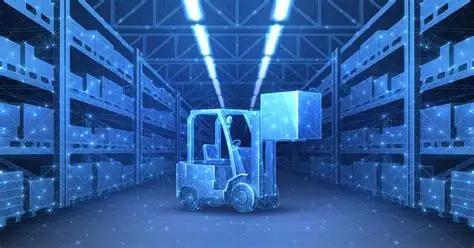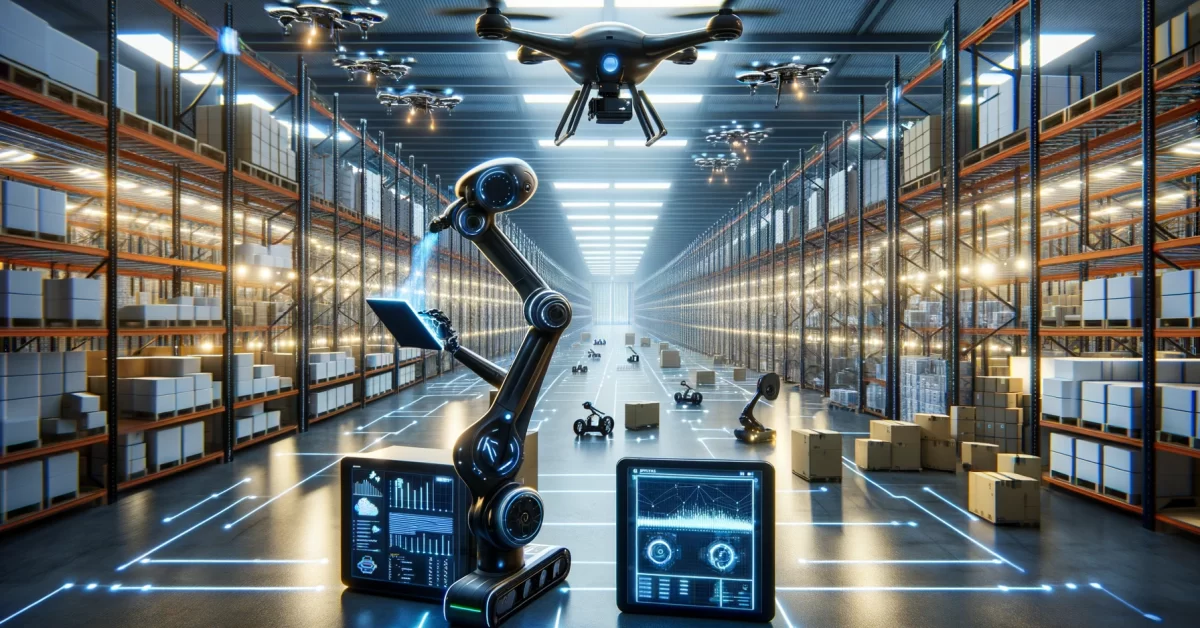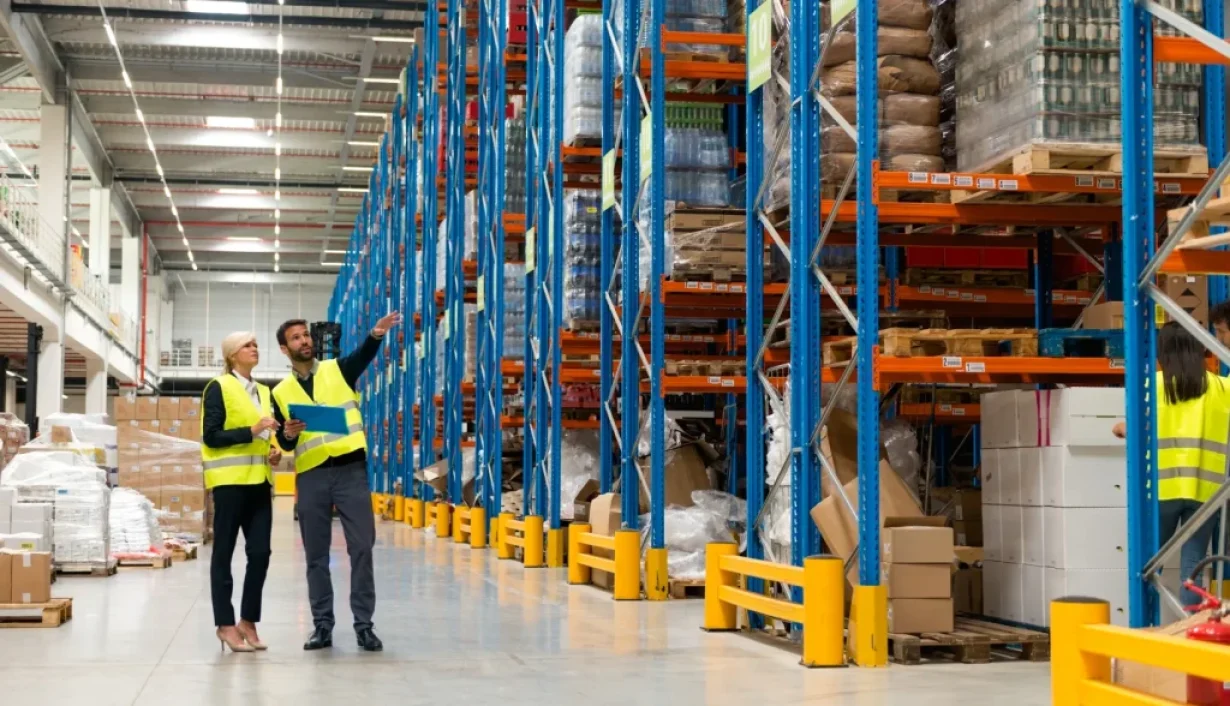
Introduction
The warehousing and logistics sector is experiencing a surge in innovation. Driven by demand for faster delivery, higher efficiency, and sustainability, 2025 brings a new wave of transformation. Businesses that understand these trends can stay ahead in a competitive market.
1. Warehousing-as-a-Service (WaaS)
Just like cloud computing, on-demand warehousing allows businesses to rent space only when needed. Startups and SMEs are using WaaS platforms to scale operations without heavy investment.
2. Rise of Urban Logistics Hubs
Due to urbanization, the focus is shifting toward small-scale warehouses in cities to support last-mile delivery. This trend helps reduce transit time and supports instant delivery models like food and grocery.
3. Autonomous Material Handling
Forklifts, pallet movers, and conveyor belts are becoming smarter. AMRs (Autonomous Mobile Robots) and AGVs (Automated Guided Vehicles) are becoming mainstream in large and medium warehouses.
4. Real-Time Data & Predictive Logistics
With IoT sensors and AI systems, warehouses can now predict inventory needs, identify maintenance issues early, and track shipments at every stage — offering full visibility.
5. Labor Shortage Driving Tech Adoption
The global shortage of warehouse workers is forcing companies to invest in automation, wearable tech (like smart glasses), and robotics to maintain performance and output.
Conclusion
The warehousing and logistics market is no longer just about space — it’s about agility, speed, and intelligence. These trends show where the industry is headed and how businesses can evolve to meet new expectations.
Powered by Froala Editor
Related Insights & Articles

July 14, 2025
At vero eos et accusamus et iusto odio dignissimos ducimus qui blanditiis praesentium
At vero eos et accusamus et iusto odio dignissimos ducimus qui blanditiis praesentium voluptatum deleniti atque corrupti quos dolores et quas molestias excepturi sint occaecati cupiditate non provident, similique sunt in culpa qui officia deserunt mollitia animi, id est laborum et dolorum fuga. Et harum quidem rerum facilis est et expedita distinctio. Nam libero tempore, cum soluta nobis est eligendi optio cumque nihil impedit quo minus id quod maxime placeat facere possimus, omnis voluptas assumenda est, omnis dolor repellendus. Temporibus autem quibusdam et aut officiis debitis aut rerum necessitatibus saepe eveniet ut et voluptates repudiandae sint et molestiae non recusandae. Itaque earum rerum hic tenetur a sapiente delectus, ut aut reiciendis voluptatibus maiores alias consequatur aut perferendis doloribus asperiores repellat.

July 18, 2025
The Future of Warehousing — Embracing Automation and AI
Introduction
Warehousing is no longer just about storage — it's about speed, accuracy, and adaptability. As e-commerce grows and supply chains globalize, the demand for faster and smarter warehouse operations is transforming the entire industry. Automation and AI are no longer luxuries — they are becoming essential tools for modern warehouses.
The Rise of Smart Warehouses
Smart warehouses use a combination of sensors, AI software, robotics, and data analytics to automate repetitive tasks like picking, packing, inventory tracking, and shipment scheduling.
For instance, companies like Amazon use robotic arms and shelf-carrying robots to optimize picking paths and reduce manual effort. With advanced machine learning, these systems can learn and adapt over time, further improving their performance.
Benefits of Automation
Increased Speed: Robots and automated conveyors work 24/7 without breaks.
Improved Accuracy: AI-based systems reduce human error in order picking.
Better Space Utilization: Automated vertical storage solutions can save valuable floor space.
Cost Savings: While upfront investments are high, long-term savings on labor and time are substantial.
Challenges in Adopting AI
Despite its advantages, automation isn’t without its challenges:
High Initial Investment
Integration with Legacy Systems
Skilled Labor Shortage
Ongoing Maintenance Costs
AI in Action: Real-World Examples
Alibaba's Smart Warehouse: Staffed by 700 robots, reducing labor costs by 70%.
Ocado's Grid System: Fully automated grocery fulfillment with 24/7 operations.
What’s Next for Warehousing?
Drones for Inventory Checks
Blockchain for Transparent Supply Chains
Autonomous Forklifts and Delivery Robots
Predictive AI for Stock Replenishment
Conclusion
Automation and AI are transforming warehousing from a labor-intensive function to a data-driven operation. Businesses that adopt these technologies today will lead tomorrow’s supply chain innovations.
Powered by Froala Editor

July 18, 2025
Why Inventory Management Can Make or Break Your Business
Introduction
Inventory management might sound like a backend process, but its impact is visible at the front lines — especially when customers experience out-of-stock items or delayed deliveries. Efficient inventory handling is not just a part of logistics, it’s a key driver of profitability, customer satisfaction, and operational stability.
The Real Cost of Poor Inventory Control
Overstocking: Ties up capital, increases storage costs, and leads to product waste (especially for perishable goods).
Understocking: Causes stockouts, lost sales, and damages brand credibility.
Hidden Costs: Time spent searching for misplaced items, employee inefficiencies, and warehouse errors.
Modern Solutions for Smarter Inventory
Cloud-Based Inventory Systems: Access real-time data from any device, anywhere.
Barcode/RFID Scanning: Speeds up tracking and minimizes manual entry errors.
AI & Predictive Analytics: Forecast demand more accurately using historical data and trends.
Inventory Management Strategies
ABC Analysis: Categorize inventory into 3 groups (A - high value, B - moderate, C - low value).
FIFO vs. LIFO: Choose a method based on your industry to manage stock rotation.
Safety Stock: Always keep a buffer stock to handle supply chain disruptions.
Common Mistakes to Avoid
Relying on spreadsheets
Ignoring seasonal demand shifts
Lack of proper audits
No clear reorder points
Tools & Technologies to Consider
ERP systems like SAP, Oracle, or Zoho
Mobile inventory apps for scanning and stocktaking
IoT sensors for real-time monitoring
Conclusion
Inventory is not just about what’s in your warehouse — it's about business control. Smarter inventory practices save money, improve service, and allow your business to scale efficiently.
Powered by Froala Editor
